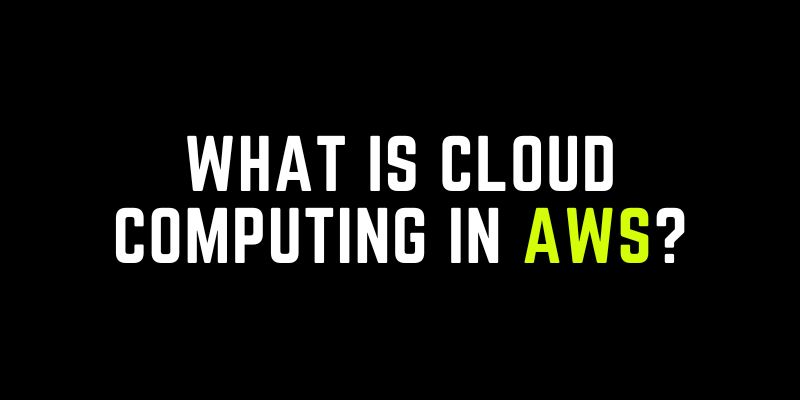
Cloud computing is an Internet-based information technology service that connects large groups of remote servers to provide centralized data storage and online access to computer resources and services. Instead of building, operating, and maintaining infrastructure, businesses can use cloud computing to utilize shared computing and storage resources. If you are here to know What is Cloud Computing in AWS? You can join AWS Training in Chennai at FITA Academy.
The following functionalities are made possible by the cloud computing model.
- On-demand resource provisioning and release are possible for users.
- Depending on the load, resources can be automatically scaled up or down.
- With proper security, assets are accessible over a network.
- Cloud service providers can assist with a pay-as-you-go model, in which users are charged based on the assets used and the amount used.
Types of Clouds
The three types of clouds are public, private, and hybrid different types of clouds.
Public Cloud
In the public cloud, third-party service providers make resources and services available to their customers via the Internet. Customer data and related security are with the service providers’ owned infrastructure.
Private Cloud
The features of a private cloud are identical to those of a public cloud, but the company or a third party controls only the customer firm’s data and services. Security-related concerns are limited in this cloud because infrastructure is the major area under control.
Hybrid Cloud
A hybrid cloud is created by combining public and private clouds. The choice of running on a private or public cloud typically depends on a number of factors, including the sensitivity of the data and applications, required standards and certifications from the industry, and legal requirements.
Cloud Service Models
IaaS, PaaS, and SaaS are the three different service model types available in the cloud.
IaaS
Infrastructure as a Service is referred to as IaaS. Users can instantly deploy processing, storage, and network connectivity. Customers can create their own apps on these resources using this service model. Are you searching for AWS Online Training? Then, join FITA Academy for the best AWS Course with a hands-on project for practical sessions to develop your skills technically.
PaaS
Platform as a Service (PaaS) is an abbreviation. Here, the service provider offers a range of services to their clients, including emails, databases, queues, and workflow engines. Customers can use these components to create their own applications. Customers can concentrate more on the effectiveness of their application because the service provider manages services, resource availability, and data backup.
SaaS
Software as a Service is also known as SaaS. As the name implies, in this scenario, third-party providers give their clients end-user apps with the capacity to manage users and perform some application-level administrative functions. Using a customer’s own company logos, colours, etc., is one feasible level of customization.
Advantages of Cloud Computing
The following is a list of certain significant advantages that cloud computing provides:
- Cost-Efficient − As we must acquire, pay for, install, and configure hardware, creating our own platforms and tools takes time and money. However, while using cloud computing, we only pay for our computing resources. Cloud computing is economical in this way.
- Reliability − A cloud computing platform offers a more managed, consistent, and reliable service compared to an on-premises IT infrastructure. It promises service for all 365 days of the year. Hosted applications and services can be switched to another server in the event of a server failure.
- Unlimited Storage − We don’t have to be concerned about outgrowing our current storage space because cloud computing gives practically endless storage capacity. Depending on what we require, we can access more or less.
- Backup & Recovery − Compared to keeping data on a physical device, backing up and recovering data on the cloud is easier. We can retrieve our data anytime because of cloud service providers’ technologies.
- Easy Access to Information − As long as you have an active internet connection, you can access your account once you register for a cloud-based service. The storage and security features vary depending on the chosen account type. Here, we offer the training with the recently updated syllabus in AWS Training in Bangalore.
Read more: Amazon S3 Storage Classes
